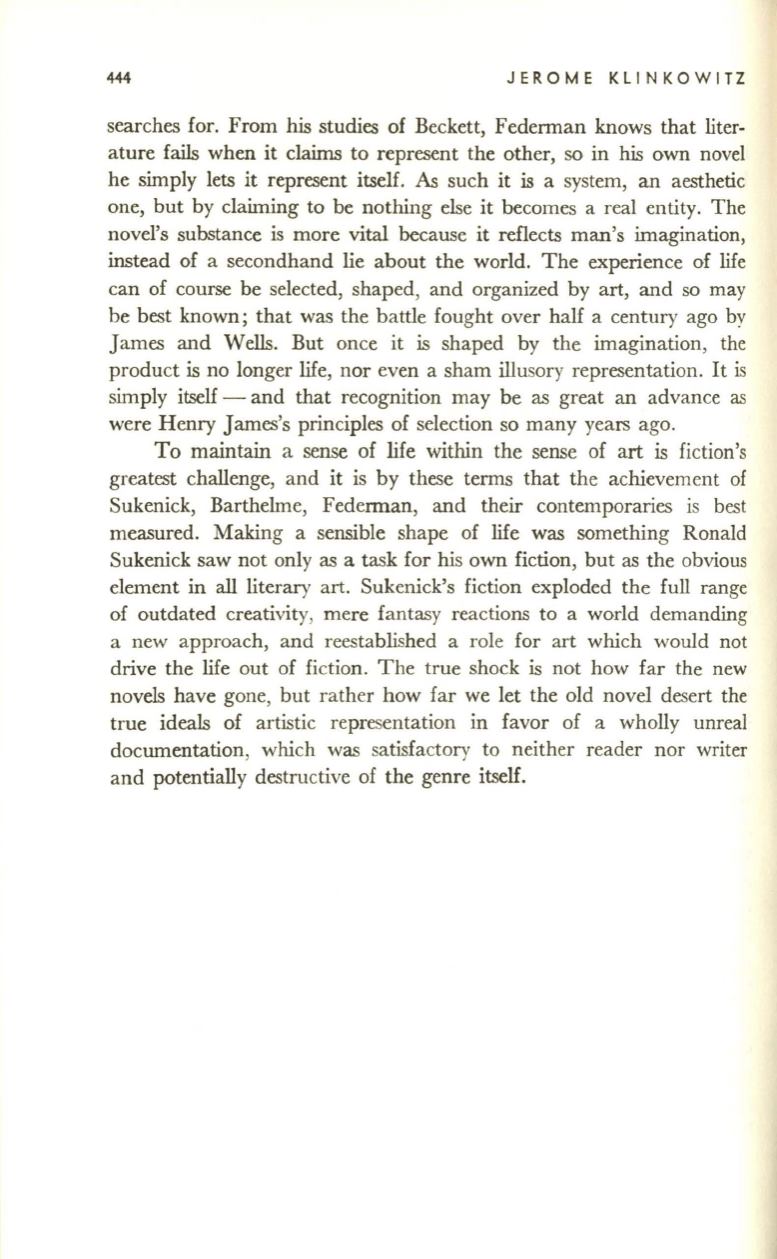
444
JEROME KLINKOWITZ
searches for. From his studies of Beckett, Fedennan knows that liter–
ature fails when it claims to represent the other, so in
his
own novel
he simply lets it represent itself.
As
such it is a system, an aesthetic
one, but by claiming to be nothing else it becomes a real entity. The
novel's substance is more vital because it reflects man's imagination,
instead of a secondhand lie about the world. The experience of life
can of course be selected, shaped, and organized by art, and so may
be best known; that was the battle fought over half a century ago by
James and Wells. But once it is shaped by the imagination, the
product is no longer life, nor even a sham illusory representation.
It
is
simply itself - and that recognition may be as great an advance as
were Henry James's principles of selection so many years ago.
To maintain a sense of life within the sense of art is fiction's
greatest challenge, and it is by these tenns that the achievement of
Sukenick, Barthelme, Fedennan, and their contemporaries is best
measured. Making a sensible shape of life was something Ronald
Sukenick saw not only as a task for his own fiction, but as the obvious
element in
all
literary art. Sukenick's fiction exploded the full range
of outdated creativity, mere fantasy reactions to a world demanding
a new approach, and reestablished a role for art which would not
drive the life out of fiction. The true shock is not how far the new
novels have gone, hut rather how far we let the old novel desert the
true ideals of artistic representation in favor of a wholly unreal
documentation, which was satisfactory to neither reader nor writer
and potentially destructive of the genre itself.


